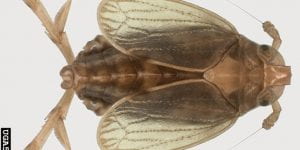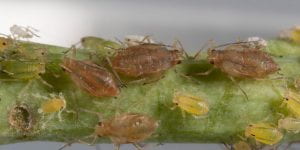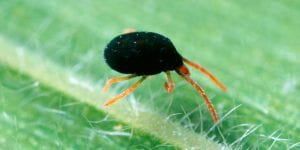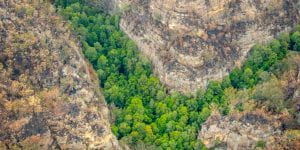Category: Research
-
A self-spreading bacterial infection in an agricultural pest that stops the pest from spreading plant viruses
Words: Ary Hoffmann Banner image: Natasha Wright, licensed under Creative Commons Attribution 3.0 License. In Asia, one of the most damaging pests of rise is the brown planthopper, Nilaparvata lugens. This pest damages plants directly but more importantly it acts as a vector for damaging plant viruses, including the “rice ragged stunt virus” (RRSV). This […] -
The resistance advantage – a field genetic background is important for survival of our Wolbachia mosquitoes in Malaysia and reduction of dengue
Banner image: Nancy with scientists from the Wolbachia dengue program at the Institute for Medical Research, Ministry of Health, Kuala Lumpur, Malaysia. Words and photos: Nancy M. Endersby-Harshman Our paper published two weeks ago in Insects is the result of a research collaboration between PEARG at the University of Melbourne, the Institute for Medical Research […] -
The grasshopper that was lost, then found, is now endangered
This article was first published on Pursuit. Read the original article. By Professor Ary Hoffmann, Vanessa White and Professor Michael Kearney The Key’s Matchstick Grasshopper, or the Keyacris scurra, was once widespread and abundant in New South Wales, the Australian Capital Territory and north-central Victoria, but over the past century its numbers have seriously declined. […]blogs.unimelb.edu.au/pearg/2020/08/21/the-grasshopper-that-was-lost-then-found-is-now-endangered
-
Targeting the bacteria inside insects for improved pest management
This article was first published on Pursuit. Read the original article Francesca Noakes and Professor Ary Hoffmann Any home gardener knows of the long-running battle against insect pests. The little critters that sneak into your garden beds and strip leaves are irritating among prized kale, but for farmers these tiny pests can have devastating economic […] -
New Pursuit article – Have resistance, will travel
This article was first published on Pursuit. Read the original article here. Authors: Dr Nancy Endersby-Harshman, Dr Qiong Yang, Dr Tom Schmidt and Professor Ary Hoffmann Around the world, pest insects – like mosquitoes – often become resistant to the insecticides meant to control them, causing problems for agriculture and public health. Resistance in multiple populations […]blogs.unimelb.edu.au/pearg/2020/05/28/new-pursuit-article-have-resistance-will-travel
-
Moshe Jasper: Humans of BioSciences
Meet Moshe Jasper, Research Assistant in PEARG. Moshe shares what inspired him to become a scientist and what he wishes he had known when he was an undergraduate student. What is it like to work in PEARG ? The Pest & Environmental Adaptation Research Group undertakes research on adaptation of organisms (particularly invertebrates) to environmental […]blogs.unimelb.edu.au/pearg/2020/04/24/moshe-jasper-humans-of-biosciences
-
What can cattle teach us about evolution?
Ary Hoffmann Charles Darwin in his On the Origin of Species used data from domestic animals to argue for the power of natural selection in changing phenotypes. These included examples from birds and dogs as well as livestock. The latter having been selected across many years to increase productive yields such as milk and meat. […]blogs.unimelb.edu.au/pearg/2020/04/17/what-can-cattle-teach-us-about-evolution
-
Looking for a funded PhD or MPhil scholarship?
The Australian Grains Pest Innovation Program (AGPIP) is offering 4 fully funded scholarships at the University of Melbourne for potential PhD or MPhil students interested in cutting-edge science, environmental sustainability and agricultural innovation. AGPIP is a collaboration between the PEARG and cesar. The program is aimed at improving the sustainability of invertebrate pest management practices […]blogs.unimelb.edu.au/pearg/2020/04/06/looking-for-a-phd-or-mphil-scholarship
-
How do we protect our unique biodiversity from megafires?
This article was first published on Pursuit. Read the original article. Authors: Dr James Camac, Nicholas Bell and Professor Ary Hoffmann This summer’s devastating Australian fires and their continuing impact on biodiversity serve as a stark reminder of the challenges in nature conservation as we head into an increasingly volatile future driven by climate change. […]blogs.unimelb.edu.au/pearg/2020/02/21/how-do-we-protect-our-unique-biodiversity-from-megafires
Number of posts found: 65









